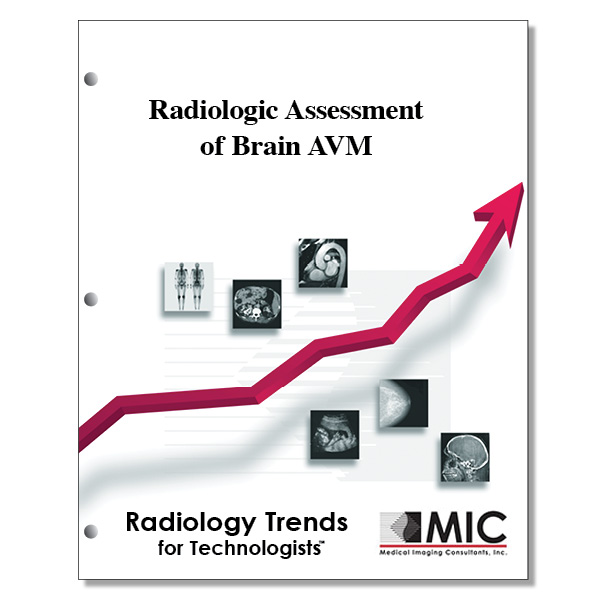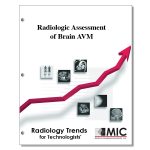

Radiologic Assessment of Brain AVM
The radiologic assessment of patients to aid in decision making as it pertains to clinical management of AVMs.
Course ID: Q00335 Category: Radiology Trends for Technologists Modalities: Radiography, Vascular Interventional2.5 |
Satisfaction Guarantee |
$29.00
- Targeted CE
- Outline
- Objectives
Targeted CE per ARRT’s Discipline, Category, and Subcategory classification:
[Note: Discipline-specific Targeted CE credits may be less than the total Category A credits approved for this course.]
Computed Tomography: 2.00
Procedures: 2.00
Head, Spine, and Musculoskeletal: 2.00
Magnetic Resonance Imaging: 2.00
Procedures: 2.00
Neurological: 2.00
Registered Radiologist Assistant: 2.50
Patient Care: 0.50
Patient Management: 0.50
Procedures: 2.00
Neurological, Vascular, and Lymphatic Sections: 2.00
Vascular-Interventional Radiography: 2.00
Procedures: 2.00
Vascular Diagnostic Procedures: 2.00
Outline
- Introduction
- Abnormal Intraparenchymal Vessels
- Classic Brain AVMs
- Cerebrofacial Arteriovenous Metameric Syndrome
- Proliferative Angiopathy
- Abnormal Extraparenchymal Vessels
- Pial AVFs
- Dural AVFs
- Moyamoya Disease
- Assessment and Management of Brain AVMs
- Imaging of Brain AVMs: What the Clinician Needs to Know
- Treatment Options
- Summary
Objectives
Upon completion of this course, students will:
- define a brain AVM
- discuss the origin of pial arteries
- understand how classic brain AVMs and pial AVFs can be managed
- discuss the treatment of dural AVFs
- describe the connection of classic brain AVMs
- define nidus
- define fistula
- be familiar with the presentation of the patient with classic brain AVM
- evaluate the radiographic hallmarks of a nidus of an AVM
- define proliferative or diffuse nidus
- discuss the angiographic hallmarks of an unstable classic brain AVM
- describe the cause of CAMS
- be familiar with the characteristics of CAMS
- describe the radiographic presentation of CAMS
- know the symptoms of patients with CAMS
- discuss the prevalence of proliferative angiopathy
- understand the patient’s presentation of symptoms with proliferative angiopathy
- discuss the angiographic presentation of proliferative angiopathy
- describe the differentiation of proliferative angiopathy from classic brain AVMs
- be familiar with the morphology of DVAs
- define caput medusae
- describe the anatomy of the caput medusae
- understand other pathologies that must be investigated in patients with DVA
- differentiate between pial AVMs and pial AVFs
- discuss the imaging characteristic of pial AVFs
- know the arteries involved in dural AVFs
- distinguish the clinical features of a Borden type 1 dural AVF
- describe the classification of dural AVFs
- understand the clinical presentation of children with moyamoya disease
- describe the appearance of moyamoya disease on angiography
- know the cause of moyamoya disease
- discuss the use of DSA in the diagnoses of moyamoya disease
- be familiar with the complications of AVMs
- know which AVMs should be treated
- identify the risks of radiosurgery
